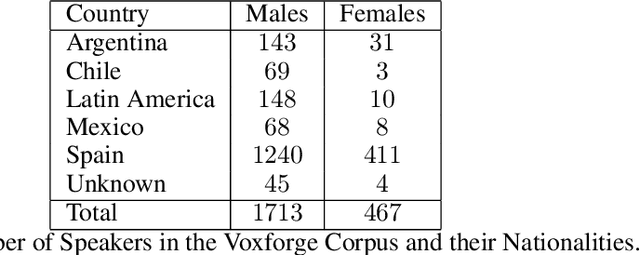Triplet loss based embeddings for forensic speaker identification in Spanish
Paper and Code
Feb 24, 2021



With the advent of digital technology, it is more common that committed crimes or legal disputes involve some form of speech recording where the identity of a speaker is questioned [1]. In face of this situation, the field of forensic speaker identification has been looking to shed light on the problem by quantifying how much a speech recording belongs to a particular person in relation to a population. In this work, we explore the use of speech embeddings obtained by training a CNN using the triplet loss. In particular, we focus on the Spanish language which has not been extensively studies. We propose extracting the embeddings from speech spectrograms samples, then explore several configurations of such spectrograms, and finally, quantify the embeddings quality. We also show some limitations of our data setting which is predominantly composed by male speakers. At the end, we propose two approaches to calculate the Likelihood Radio given out speech embeddings and we show that triplet loss is a good alternative to create speech embeddings for forensic speaker identification.
 Add to Chrome
Add to Chrome Add to Firefox
Add to Firefox Add to Edge
Add to Edge